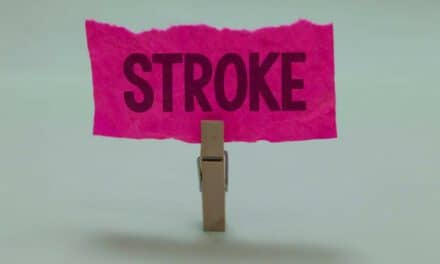According to results from a national survey released by The Ohio State University Wexner Medical Center, most women do not know the risks or symptoms females face when it comes to sustaining a stroke. A university news release reports that the survey of 1,000 women comes on the heels of Stroke Awareness Month in May.
The results indicate that just 11% of women could correctly identify pregnancy, lupus, migraine headaches, and oral contraception or hormone replacement therapy as female-specific stroke risks.
The release says the survey also revealed that only 10% were aware that hiccups combined with atypical chest pain are among the early warning signs of a stroke in women when accompanied by or followed by typical stroke symptoms.
The National Stroke Association states that stroke is the third leading cause of death for women.
Diana Greene-Chandos, MD, a neurologist and director of neuroscience critical care at Ohio State’s Wexner Medical Center, explains in the release that she believes more progress needs to be made when it comes to educating women about stroke and their unique risk factors.
“Things like pregnancy, hormone replacement therapy, and even something as trivial as a case of the hiccups can all play an important role when it comes to strokes in women, and we need to be more aware of it,” Greene-Chandos points out.
She adds that some risk factors are the same for both women and men, including smoking, not exercising, or having a blood pressure higher than 140/90. Additional stroke risk factors for men and women include having a hemoglobin A1C of more than 7 if an individual is already diabetic, or 5.7 if not; as well as having a LDL cholesterol of less than 100 if an individual is without additional stroke risks, or less than 70 with additional stroke risks, particularly diabetes.
A variety of online assessments are available for assessing stroke risk, including a pen-and-paper test created by Ohio State stroke experts. Download it here.
Greene-Chandos states that women may experience more headaches with their strokes, and hiccups with a little chest pain can accompany stroke symptoms. Also, pregnancy can increase stroke risk, particularly in the final months and the immediate period after delivering the child.
While Greene-Chandos recommends men and women focus on keeping their blood pressure under 140/190 since having high blood pressure is a key stroke risk, the release notes that symptoms of stroke can be different for women, and may include hiccups, dizziness that is not classic vertigo, headaches, as well as atypical chest pain and/or numbness of the entire body with one side being more numb than the other.
The release reports that the Ohio State Survey also found that nearly half of all women indicated that they did not know what issues females face after stroke. In addition to nerve damage and problems swallowing, depression is common among women and often keeps them from getting the rehab that is vital to their recovery, Greene-Chandos says.
“The more you use your brain, the better you’ll do in your recovery after a stroke. And overall for our society, we need to reduce our stress levels. Whatever it is that you can do that makes you happy and calm each day, make sure that you dedicate some time to doing it,” she emphasizes.
[Source: The Ohio State University Wexner Medical Center]





